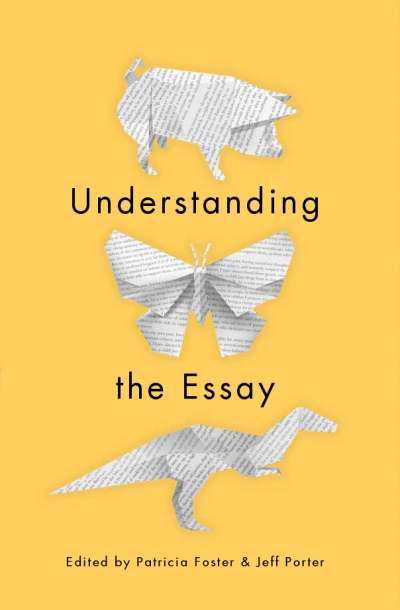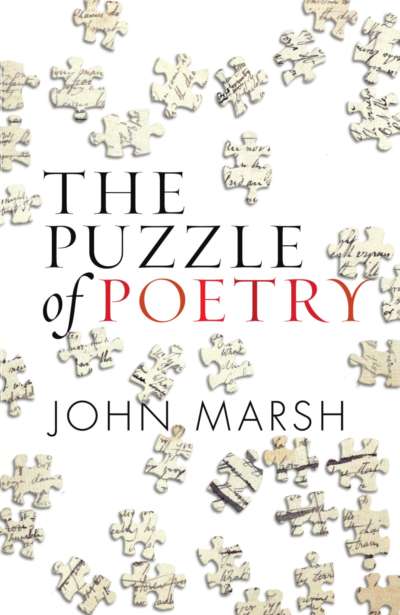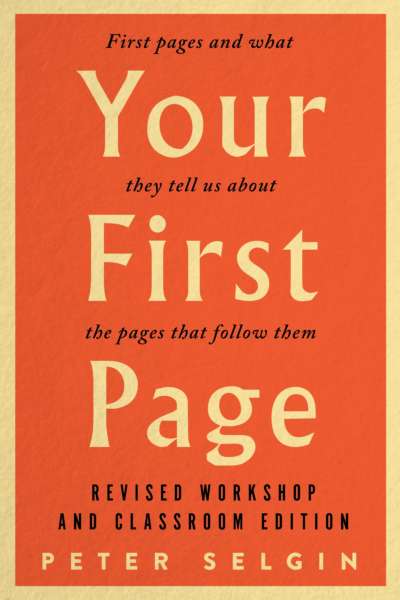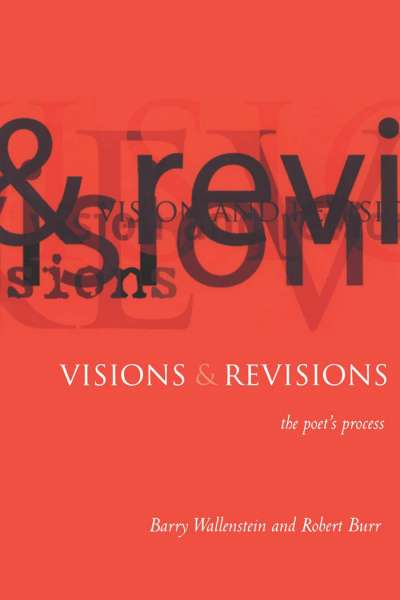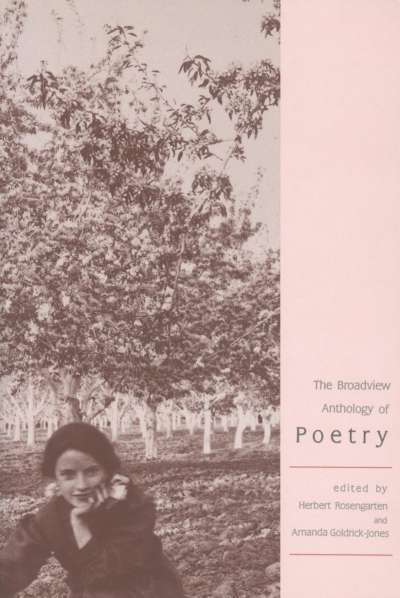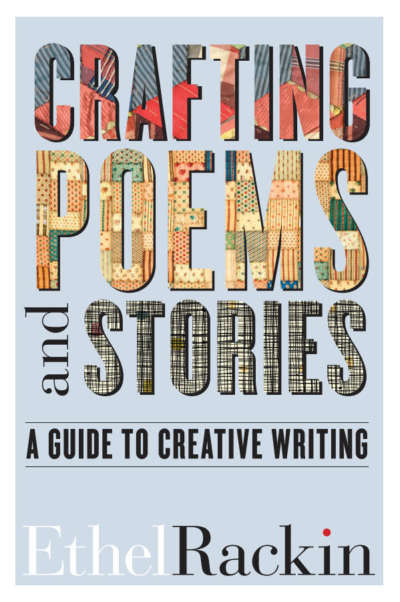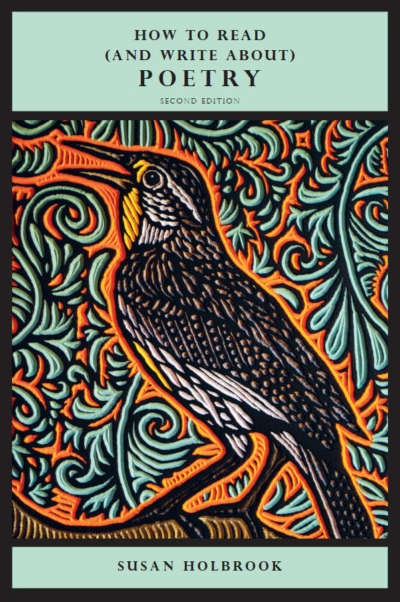Most texts on creative writing emphasize either sources of inspiration or strategies for editing. The process of getting from initial inspiration to final draft isn’t often dealt with in any practical way. Writing and Workshopping Poetry focuses on all three phases of the process of composition: finding the material; building and developing the poem from rough draft to complete work; editing and refining.
The text offers everything students and instructors need: extensive notes written in an accessible, conversational style; seventy-five writing exercises; and about a hundred poems chosen from a wide range of sources, from sixteenth-century sonnets to experimental constrained forms, with an emphasis on exciting poems by contemporary American and Canadian poets. Each chapter concludes with a brief, point-form summary of major learning objectives as well as a review list of useful terms.
Comments
“Writing and Workshopping Poetry: A Constructive Introduction is true to its title: it is a practical and well-organized handbook for beginning students at a college or university level. But it is also more sophisticated and philosophical than the title implies; its detailing and description of poetic techniques are contextualized within the history of poetry, poetics, and its ever-widening practice, from the lyric to the hypertext. The book is well structured and provides the basics without talking down to students, which makes it particularly useful for classes where students may be beginning at different levels of knowledge.” — Mary di Michele, Concordia University
“Often poetry’s range of genres goes unstressed in books on how to workshop and write poetry. Stephen Guppy addresses the scope and essentials for the larger dimensions of verse that encompass dramatic and narrative forms. He identifies and describes how devices and techniques are used within the individual forms. Chapters come with core vocabulary and exercises for applying what has been learned; these exercises are inspired, stimulating, and original in their own right. Overall, the book builds a framework for young poets to appreciate each other’s poetry and to talk to each other about it in an informed and helpful way in workshop. To stretch one of Wordsworth’s dictums for poetry, Stephen Guppy talks about the ordinary and wonderful workings of poetry in a wonderfully ordinary and accessible way.” — George McWhirter, University of British Columbia
“Thanks to Broadview for publishing Stephen Guppy’s Writing and Workshopping Poetry. It’s rare to find a poetry textbook with so much Canadian content, let alone one that is so excellent, diverse, and current. I’m loving teaching from it. My students are keenly responsive to the poems and writing prompts. And, most of all, the chapters are thorough, entertaining, and clear. Guppy keeps surprising me with insights.” — Michael V. Smith, University of British Columbia Okanagan
Introduction: Shaping Fire
- Poetry and Language
- The Roots of Poetry
- Why Read Poetry?
- What Makes a Poet?
- Takeaway
- Terms to Remember
Chapter 1: Finding the Materials
- Writing from Experience and Observation
- Writing from Memories
- Writing from Research
- Reacting to Another Work of Art
- Writing in a Fixed Form
- Re-Imagining Traditional Subjects and Themes
- Using Forced-Inspiration Exercises
- Borrowing Non-Literary Forms: The “Hermit-Crab Poem”
- Exercises
- Takeaway
- Terms to Remember
- Poems included and discussed
- Robert Herrick, “To the Virgins, To Make Much of Time”
Cecily Parks, “Aubade With Foxes”
William Shakespeare, “Sonnet CXXX”
Ben Jonson, “On My First Son”
Stephanie Lenox, “After Uncle Fred Nearly Dies, We Send the Tape to America’s Funniest Home Videos”
Tyehimba Jess, “Hagar in the Wilderness”
Shelley Puhak, “Letter to the Gnome Who Stole My Firstborn”
Pauline Uchmanowicz, “Elements of Style”
Jennifer Chang, “Pastoral”
A.E. Stallings, “First Love: A Quiz”
Chapter 2: Genre, Form, and Structure
- The Genres of Poetry
- Form
- Basic Principles: Rhetorical Strategy, Formal Envelope, Internal Design
- Structure
- Basic Principles: Unity, Symmetry, and Circularity
- Rhetorical Modes
- Exercises
- Takeaway
- Terms to Remember
- Poems included and discussed
- Matthew Arnold, from “Empedocles on Etna”
William Shakespeare, “Sonnet LV”
Jericho Brown, “Tradition”
A.F. Moritz, “Busman’s Honeymoon”
James Pollock, “The Museum of Death”
Garrett Hongo, “The Legend”
Chapter 3: Telling the Poem
- The Mask of the Poet
- Speaker and Auditor
- Apostrophe and Imperative
- The Communal Voice: First-Person Plural
- Dialogic and Choral Poems
- The Objective Narrator
- The Questioning Narrator
- Developing and Refining the Voice of the Poem
- Exercises
- Takeaway
- Terms to Remember
- Poems included and discussed
- John Milton, “Invocation”
Elizabeth Barrett Browning, “Beloved, thou has brought me many flowers”
Edgar Lee Masters, “Doctor Meyers”
Sean Thomas Dougherty, “Dear Tiara”
Amy Gerstler, “Siren”
John Keats, “Bright star, would I were stedfast as thou art”
James Arthur, “Ode to an Encyclopedia”
John Donne,“Song (Go and Catch a Falling Star)”
E. Pauline Johnson, (Tekahionwake), “Marshlands”
Tami Haaland, “Little Girl”
Tracy K. Smith, “Sci-Fi”
Chapter 4: Developing Imagery
- Thinking in Images
- Techniques for Description
- Engaging the Senses
- Eliminating the Observer
- Using Synaesthesia
- Keeping Images “In Key”
- Conducting an “Image Inventory”
- Poetic Mythology
- Seasonal Symbolism
- Diurnal and Nocturnal Symbolism
- Other Popular Motifs
- Building with Imagery
- Exercises
- Takeaway
- Terms to Remember
- Poems included and discussed
- Elizabeth Barrett Browning, from “To Autumn”
Suzanne Buffam, “The New Experience”
Stephen Guppy, “Language Arts”
Deborah Landau, “I Don’t Have a Pill for That”
Percy Bysshe Shelley, “To Night”
Emily Brontë, “Moonlight, Summer Moonlight”
Eleni Sikélianòs, “In the Airport”
Nelly Kazenbroot, “When You Wear Clothes”
Don McKay, “Astonished”
Chapter 5: Using Figurative Language
- Tropes
- Metonymy and Metaphor
- Kennings and Circumlocutions
- Building Imagery with Metonymy and Metaphor
- Personification
- Allusion and Allegory
- Exercises
- Takeaway
- Terms to Remember
- Poems included and discussed
- Craig Raine, “A Martian Sends a Postcard Home”
Alexandra Teague, “Hurricane Season”
Kim Addonizio, “The First Line is the Deepest”
Stephen Guppy, “Tin Box”
Aislinn Hunter, “Fare Forward, Voyagers”
Sue Goyette, “Eight”
Priscila Uppal, “Sorry, I Forgot to Clean Up After Myself”
Chapter 6: Choosing the Best Words
- Denotation and Connotation
- Verb-Based and Noun-Based Poetry
- “Nouns on Wheels” and Nominalization
- Abstract and Concrete
- The DNA of Voice: Where Does Our Lexicon Come From?
- Dialect Words
- Slang and Jargon
- Technical and Scientific Language
- Ancestral Echoes
- Loan Words
- Neologisms
- Lexical Register
- Diction Clunkers: Problems to Avoid
- Vague and General Diction
- Archaic and Pretentiously “Poetic” Diction
- Clichés
- Exercises
- Takeaway
- Terms to Remember
- Poems included and discussed
- Paul Tyler, “Manitoba Maples”
William Barnes, “The Clote”
Al Purdy, “My ’48 Pontiac”
August Kleinzahler, “The Strange Hours Travelers Keep”
Ralph Gustafson, “Biography”
Carmine Starnino, “Money”
Ernest Dowson, “Non Sum Qualis Eram Bonae Sub Regno Cynarae”
Chapter 7: “Word Music”
- Exploring the Sonic Palette
- “Word Music” and the Conversational Voice
- Exercises
- Takeaway
- Terms to Remember
- Poems included and discussed
- Stephanie Bolster, “On the Steps of the Met”
- Lewis Carroll, “Jabberwocky”
Chapter 8: Understanding Prosody
- Rhyme
- Mapping a Rhyme Scheme
- Slant Rhyme
- Internal Rhyme
- Chain Rhyme
- Cascading Rhyme, Eye Rhyme, and Rime Riche
- Rhyme without Reason: A Classic Mistake
- Stress and Scansion
- Metrical Feet
- Counting the Feet: Stress and Metre
- Exercises
- Takeaway
- Terms to Remember
- Poems included and discussed
- Lady Mary Wortley Montagu, “A Receipt to Cure the Vapours”
Ken Babstock, “Tarantella”
Srikanth Reddy, “First Circle”
Amanda Jernigan, “Encounter”
- Archibald Lampman, “Snowbirds”
Chapter 9: Line, Stanza, Canto
- Line and Grammatical Structure
- Enjambed Lines and End-Stopped Lines
- Common Line Forms
- Accentual Verse
- Syllabic Verse
- Accentual-Syllabic Verse
- Long, End-Stopped Lines (“Stave Prose” or “Rhetorical Rhythm”)
- Triadic Lines (aka “Stepped Lines” or “Visual Rhythm”)
- Split Lines
- “Open Field” Composition
- Stanzas and Cantos
- Exercises
- Takeaway
- Terms to Remember
- Poems included and discussed
- Gerard Manley Hopkins, “Pied Beauty”
Cassidy McFadzean, “The Magician Wove”
Matthew Rader “Fastest Man on the Planet”
Janet McNally, “The Wicked One Goes to the Makeup Counter”
Walt Whitman, “Facing West, from California’s Shores”
Ocean Vuong, “Aubade with Burning City”
- Algernon Charles Swinburne, “Hendecasyllabics”
Chapter 10: Working with Fixed Forms
- Common Stanza Forms
- Popular European Forms
- Ballad
- Sonnet
- Villanelle
- Rondeau
- Sestina
- Triolet
- Kyrielle
- Epigram
- Acrostic
- Glosa and Cento
- Some Interesting Forms from Outside the European Tradition
- Nonce Forms
- Exercises
- Takeaway
- Terms to Remember
- Poems included and discussed
- Anonymous, 16th century, “Tom O’Bedlam’s Song”
Anne Bradstreet, “A Letter to her Husband, absent upon Publick employment”
Wilfred Owen, “Shadwell Stair”
Aphra Behn, “The Libertine”
Anonymous, from “Tom O’Bedlam’s Song”
Anonymous, “Barbara Allen”
Anonymous, from “Silver Dagger”
Christina Rossetti “A Dream (Sonnet)”
Karen Volkman, “Sonnet [Laughing below, the unimagined room]”
Dr. John McCrae “In Flanders Fields”
Camille T. Dungy, “Ark”
Elizabeth Bachinsky, “For the Punk Rock Boys”
Thomas Hardy, “How Great My Grief”
Banjo Paterson “Triolet”
William Cowper “Lines Written During a Period of Insanity”
Elizabeth Tudor (Queen Elizabeth I), “When I was Fair and Young”
Richard Arnold, “from October Aspens”
Evie Shockley, “pantoum: landing, 1976”
Lewis Carroll, “A Boat Beneath a Sunny Sky”
Samuel Taylor Coleridge, “What is an Epigram?”
Shaleeta Harper, “2, 4, 6, 8, 2”
- Aimee Nezhukumatathil, “Red Ghazal”
- Dante Gabriel Rossetti, “The Sonnet”
- Rudyard Kipling, “Sestina of the Tramp-Royal”
Chapter 11: Writing Free Verse
- Techniques for Structuring Free Verse
- Repetition
- Parallelism and Chiasmus
- Lists and Litanies
- Internal Rhyme, Half-Rhyme, and Occasional Rhyme
- Free Verse and Lineation
- “Word-Jamming” and “Word-Breaking”
- Parataxis
- Free Verse and Accentual Verse
- Finding a Resolution
- Pitfalls and Problems
- Exercises
- Takeaway
- Terms to Remember
- Poems included and discussed
- Kevin Prufer, “In a Beautiful Country”
Walt Whitman, from “Out of the Cradle Endlessly Rocking”
Lynn Crosbie “Xtraordinaire (722 Queen Street West) 1994-96)”
Rebecca Lindenberg, “Catalogue of Ephemera”
Gerard Manley Hopkins, “The Windhover”
Mina Loy, “Moreover, the Moon—”
Chapter 12: The Long Poem
- What Is a “Long Poem”?
- Types of Long Poem
- How Is a Long Poem Structured?
- The Genesis of Your Long Poem: Personal, Historical, or Mythological?
- Developing the Long Poem
- Workshopping the Long Poem
- Exercises
- Takeaway
- Terms to Remember
- Poems included and discussed
- Alfred, Lord Tennyson, from Guinevere
John Thompson, from Stilt Jack
Chapter 13: Alternative and Experimental Forms
- Exercises
- Takeaway
- Terms to Remember
- Poems included and discussed
- Denise Duhamel and Maureen Seaton, “Florida Doll Sonnet”
Sina Queyras, “A Lilac Begins to Leaf”
Matthea Harvey, “Implications for Modern Life”
Stephen Guppy, “Disclaimer”
Chapter 14: Shaping and Polishing
- Editing to Refine Diction
- Listening to the Poem
- Choosing a Title
- Formal Category Titles
- Thematic Category Titles
- Painterly Titles
- Musical Composition Titles
- Speaker’s Name Titles
- Ironic Titles
- First-Line Lead-Ins
- Incredibly Dumb Titles
- Choosing the Right Place to Begin
- Punctuation, Capitalization, etc.
- Hyphens and Dashes
- Capitalization
- “And” or Ampersand?
- Numbers
- Summary: Options for Punctuating Poems
- Exercises
- Takeaway: A Checklist for Editing Poetry
- Terms to Remember
Chapter 15: Finding an Audience
- Markets for Poetry
- Formats for Poetry Publication
- Publishing in Magazines
- Online Markets
- Preparing Your Manuscript
- Epigraphs and Dedications
- Italics and Boldface
- Foreign-Language Words
- Legal and Ethical Considerations
- The Publishing Process
- Contacting Editors and Publishers
- Print and Online Submissions
- Exclusive or Simultaneous?
- Self-Publishing
- Contests and Awards
- Performing Your Poems
- Exercises
- Takeaway
- Terms to Remember
Permissions Acknowledgements
Index of Key Terms
Index of Poets and Poems
Stephen Guppy is a retired Professor of English, Creative Writing, and Journalism and a current Honorary Research Associate, Vancouver Island University. He is the author of multiple works of fiction and poetry.
For a sample from Writing and Workshopping Poetry, click here. (Opens as a PDF.)
— Focuses on the process of composition: finding material; building and developing the poem from rough draft to complete work; editing and refining
— Offers extensive notes written in a warm, witty style
— 75 writing exercises can be assigned as graded projects while others can be used as in-class “scratch poem” projects. Some exercises invite teamwork and interaction between students.
— Roughly 100 poems chosen from a wide range of sources, from sixteenth-century sonnets to experimental constrained forms, with an emphasis on provocative poems by contemporary poets
— Each chapter contains poems that illustrate one or more of the techniques discussed in the chapter
— Each chapter concludes with a brief, point-form summary and review list of useful terms



